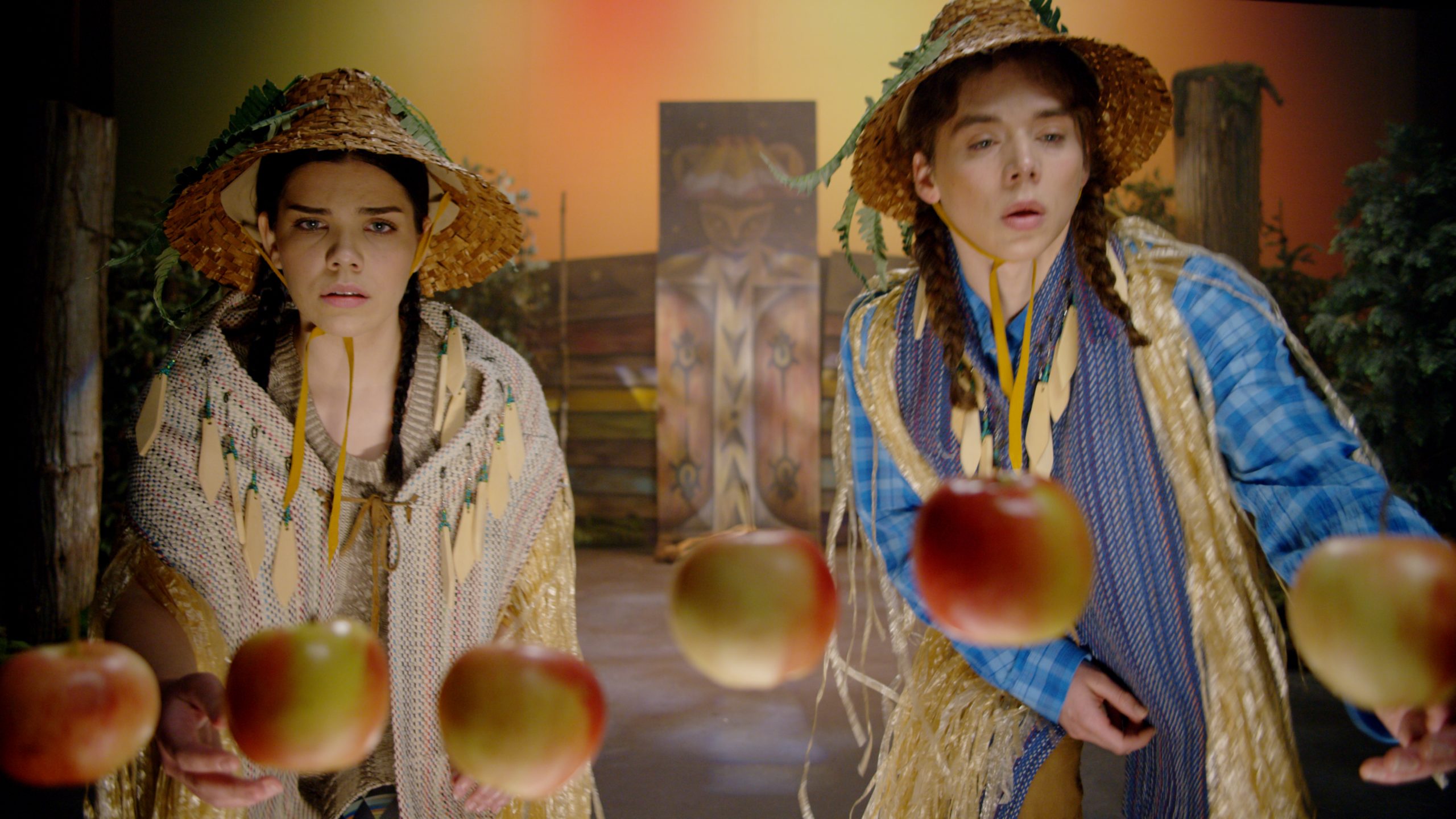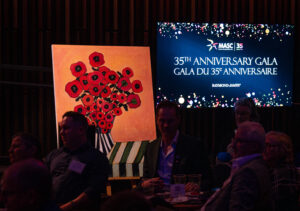MASC Interview: Axis Theatre shares Indigenous stories with young audiences
By Jessica Ruano | October 19, 2022

Originally published at Apt613.ca
Axis Theatre focuses on engaging young and young-at-heart audiences. The company’s members live, work, and play on the unceded and traditional territories of the Coast Salish peoples–sḵwx̱wú7mesh (Squamish), sel̓íl̓witulh (Tsleil-Waututh), and xʷməθkʷəy̓əm (Musqueam) nations. In this interview, Artistic Director Chris McGregor talks about reaching new audiences during the pandemic and beyond.
Axis Theatre’s productions of Th’owxiya: The Hungry Feast Dish and Kwi’ah: The Girl Who Heals are inspired by Kwantlen First Nation tales. What inspired this working relationship with Joseph A. Dandurand (Kwantlen First Nation), and how has this collaboration influenced the focus of your company?
In 2015, Joseph contacted me through email and sent me one of his scripts, Don’t Touch the Indians. I really liked his writing style; however, the play was for an adult audience, so I asked if he had any scripts for young people, specifically elementary school ages. He said that he did, but it was on a floppy disk—you know, what we used in the olden days—something he wrote 25 years ago while he was an intern at the Canadian Museum of History.
A few days later, he sent me Th’owxiya: The Hungry Feast Dish, a script that combined three Kwantlen First Nations tales. Axis Theatre workshopped the script a few times, reduced the number of characters, and then mounted a full production with six performers.
Our relationship with Joseph has blossomed over the several years of collaboration. Axis Theatre has been introduced to so many talented Indigenous performers, visual artists, designers, builders and musicians—cultural practitioners from all walks of life. These relationships have enriched Axis Theatre’s work, and many of these contacts have worked on other projects with us. Most importantly, we are employing these artists and giving them the stage and a voice to tell Indigenous stories to young people. It is a beautiful relationship and one that we continue with new playwrights and emerging artists.

Joseph A. Dandurand. Photo provided by Axis Theatre.
During the pandemic, many artists shifted to an online medium to continue connecting with their audiences. The “liveness” of theatre is often challenging to capture on film, but your company has managed it beautifully. What were some of the challenges and opportunities in sharing this theatrical production via film?
We were met with several challenges moving from a live medium into a digital format. I would say that the biggest challenge was the actual filming during the height of the pandemic. We followed very strict health protocols to ensure the safety of the cast and the crew—our staff took on new, sometimes unfamiliar roles to support the filming process. Coordinating the filming involved the schedules of more than twice as many people as we normally work with on live production, and it is very expensive. However, we overcame those hurdles and delivered a film that we are very proud of.
There was a larger demand for the film than we anticipated, which was thrilling and brought in our only income during the pandemic, with live touring at a complete standstill. Our work was introduced to communities across Canada, to new contacts and familiar ones, an audience we would have lost contact with if we hadn’t taken the risk of adjusting how we share our plays. Even more than with our live productions, we heard from young people who shared how much they enjoyed the film and what specifically spoke to them through letters and drawings. This feedback overshadowed any challenges, and we are so thankful to be able to give people access to Indigenous stories that interest and educate them.

Kwi’ah: The Girl Who Heals. Photo provided by Axis Theatre.
Your productions often incorporate red-nose clown, mime, movement, mask work, and puppetry. What about these tools and practices do you find especially useful in sharing First Nations’ stories?
These theatrical practices help engage our audiences and happen to be the areas of theatre I, as artistic director, have studied and taught. Th’owxiya uses direct address to the audience: sometimes there are questions the characters ask of the audience, and sometimes the answers are a surprise! This style is very indicative of Indigenous storytelling and incorporates clown and improvisation aspects, too. When the performers practice clowning and improvisation in rehearsal, they learn the skills that help create a dialogue with the audience and the tools to maintain the story without going off track. This way, the audience feels they are a part of the journey rather than just spectators. This interaction makes it fun for the performers as well, keeping it fresh and alive—who knows what each audience may bring! Every performance is a story just for that audience, a performance just for them.
As a member of MASC, what do you gain through offering your performances in schools and the community?
Through MASC, we’ve had the opportunity to offer virtual talkbacks with Joseph following the performances. Students usually have many questions about the history behind the script and characters: Are the spirits real? Where do the stories come from? Joseph has a wry sense of humour and an abundance of knowledge, so he truly enjoys sharing his history, culture and art with young people across Canada.

Th’owxiya: The Hungry Feast Dish. Photo provided by Axis Theatre.
Why do you think it’s important for our local community to have access to professional artists?
I think it is important to experience the talents of those who dedicate themselves to their art and know that it is a real profession, not just something that will make you famous or earn someone a lot of money. For Axis Theatre, having professional artists involved is essential to the success and integrity of our productions. They have been well-trained in their craft; they do lots of research about the stories, people, customs and traditions that make up our Indigenous plays and our other work. The many artists involved, from designers to painters, carvers, weavers, and performers, in the making of this production, take their craft very seriously and know how to engage young audiences. There is a passion and dedication that professional artists share that can inspire young people to find their own passion and follow their dreams, regardless of the obstacles.
Latest News
View All Articles



